The Massachusetts Department of Public Utilities (DPU) has opened an audit (starts on page 514/498 of pdf) into whether electric utility National Grid’s cybersecurity plan sufficiently benefits Massachusetts ratepayers, if their staffing plan for Phase II of the EV Program is sufficient, and – for the purpose of this article – whether the utility has competently managed the highly publicized rollout of the state’s 1.6 gigawatt Solar Massachusetts Renewable Target (SMART) program.
Specifically within the SMART program, the DPU is seeking a better understanding of why the utility is seeking to delay the deployment of up to 1 GW of solar power – some of which had been given official approval and had completed construction – for potentially “years” as the result of a “cluster study”.
In an interview with Emma Foehringer Merchant, National Grid’s director of regulatory strategy – Tim Roughan – suggested;
I think we’re all a little surprised by how quickly we got to this saturation.
When the SMART program started to firm its structure in the spring and summer of 2018, pv magazine USA suggested that when the program launched National Grid territory would, once again, fill up fast. We were correct, but now this highly profitable electricity utility with absolute insight into all available data has suggested that it is “surprising”.
But first, some history…
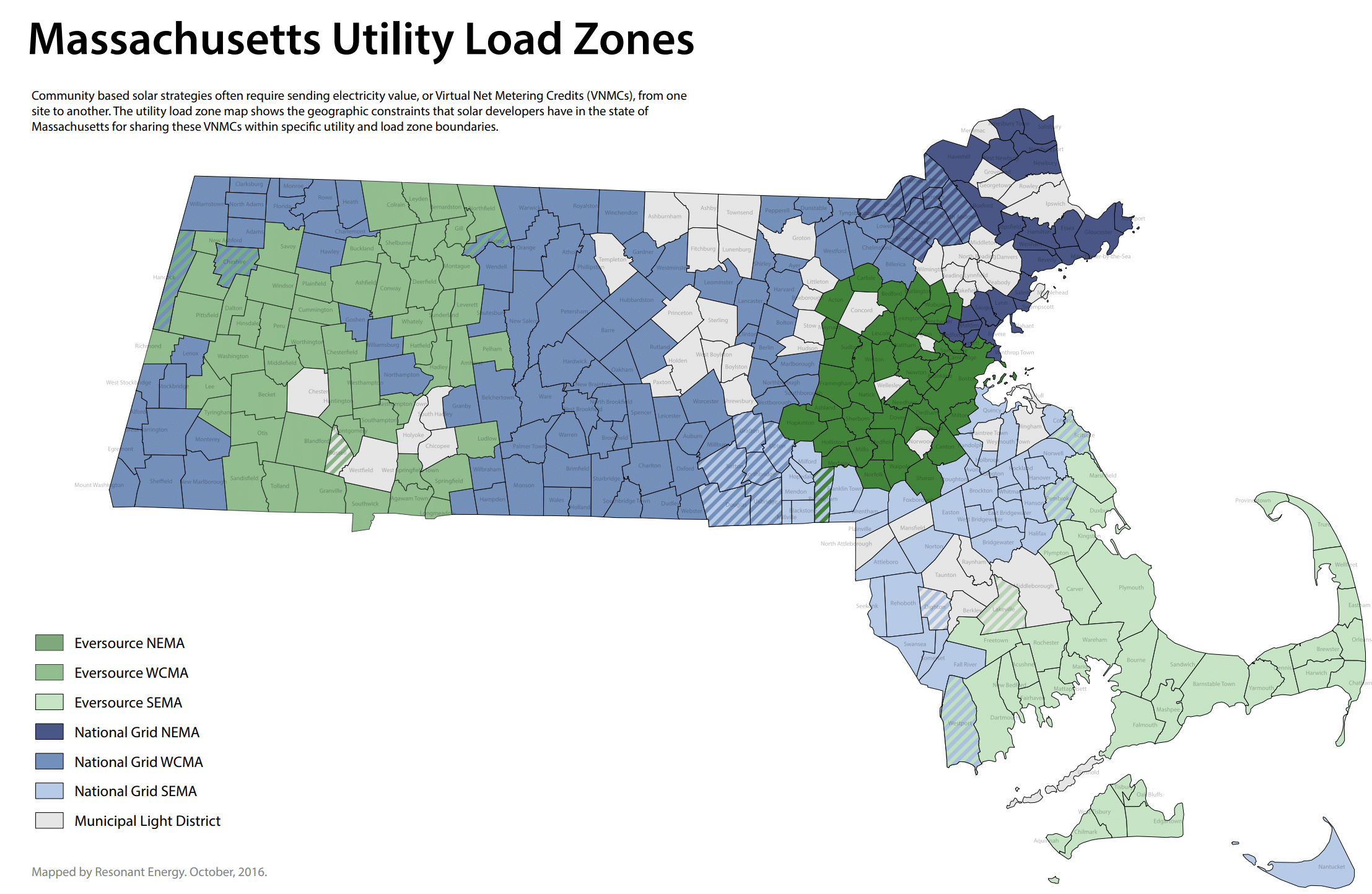
In middle of March 2015, the public net metering caps within National Grid’s Massachusetts territory (above map) were hit. The private caps within the region were hit soon after. The caps for privately owned projects were set at 4%, with publicly owned projects at 5%, of the historical peak demand for the respective utility region the projects are located within.
After the caps were hit, hundreds of megawatts of projects were still being developed for millions of dollars, with the hope that the politicians would come to an agreement to keep moving forward. This included a request for incentive temperance with the sunsetting Solar Renewable Energy Certificate (SREC) program paying up to 60¢/kWh for ten years.
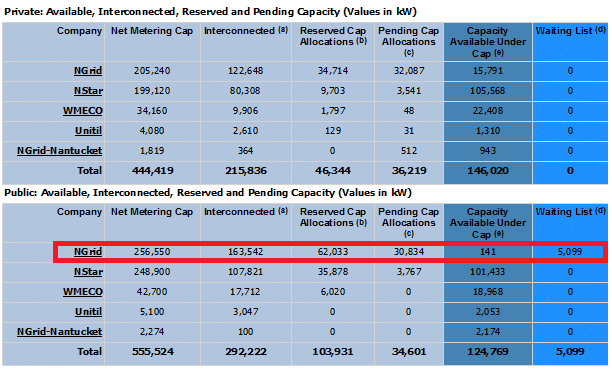
That summer, the Massachusetts Senate voted on a bill to increase the caps. However, the Massachusetts House waited until just before going home for the holidays to vote 151-2 on a significantly different version of the bill – cutting net metering compensation 71%. The Senate quickly turned around a negotiated response bill, but the House declined to vote on it before leaving for the winter.
In the Spring of 2016, those caps were increased by 3% each to 7% and 8% respectively, while kilowatt hours that were actually net metered had their reimbursement cut by 40%. When the cap increase was launched that summer, it was immediately filled by the aforementioned backlog of projects in the region.
The projects that got into the net metering program were slowly built, and by the fall of 2017, after the very successful SREC II program was winding down, it became clear another another backlog – worth hundreds of millions of dollars – had begun to build. Which is why we suggested the SMART program would suffer from the same quick fill up in National Grid territory.
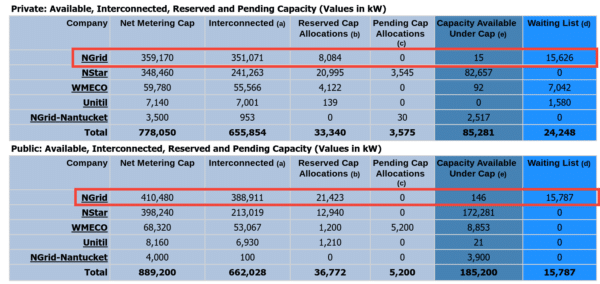
And, as of this morning (above image) we note on the Massachusetts General Net Metering program webpage that there are more than 30 MW of projects that have applied for net metering within National Grid territory that are on the waitlist.
The SMART program, via its Alternative Bill Credit structuring, did do partial end around to the net metering wait list, by allowing hundreds of megawatts of projects to move through the system. Currently, the SMART program is in review – with expansion of at least 800 MW projected – as a result of greater than 400 MWac of projects gaining their “Statement of Qualification” (essentially approved to move ahead). And once again, there is a buildup of unfulfilled solar demand (below image), in the National Grid territory.
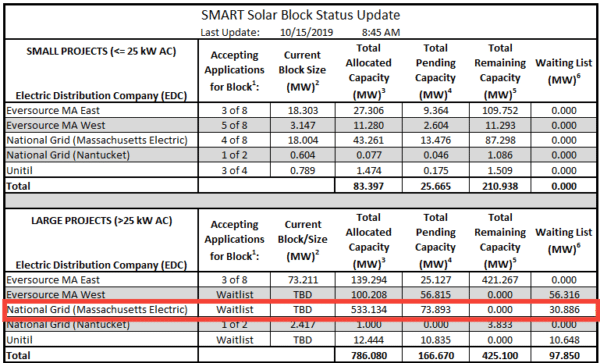
With all of this history, and projects in various interconnection queues across the state that the utility has absolute data on, it is understandable why DPU is seeking to better understand the management practices of National Grid.
This content is protected by copyright and may not be reused. If you want to cooperate with us and would like to reuse some of our content, please contact: editors@pv-magazine.com.
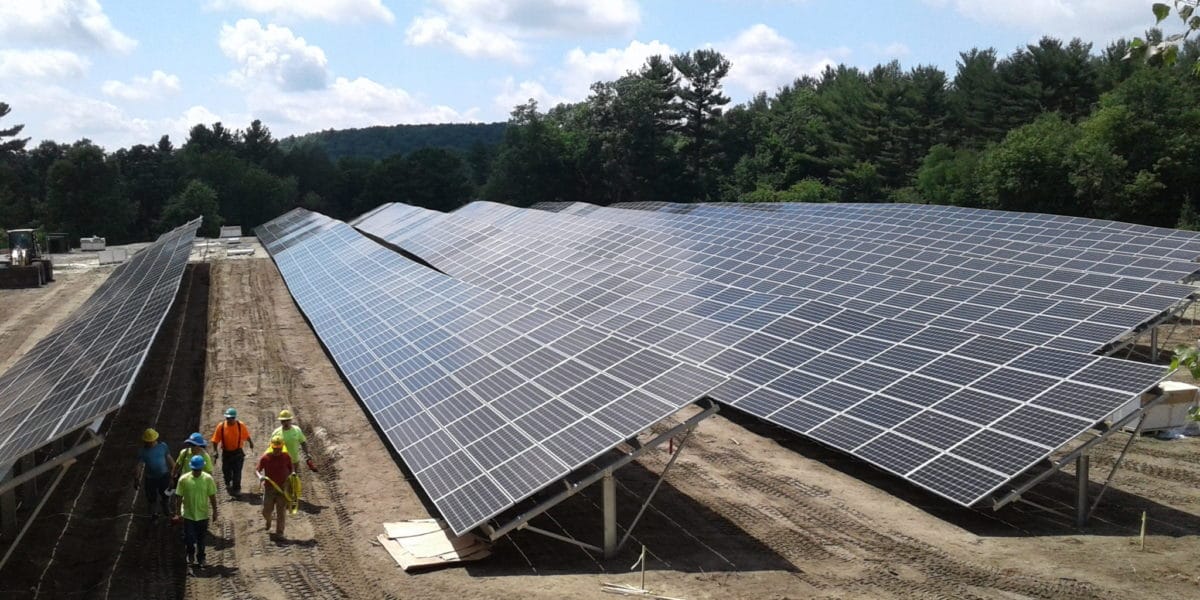







I’d rather not deduce the implications of the reporting. I appreciate and accept the difference between journalism and analysis but i could use some help – what does it matter that the programs are over subscribed? Does the public benefit? Does the utility? What are likely outcomes? As a rate payer, am I paying more, less, generating more carbon, less carbon? Driving new power plants?
Oversubscribed simply means that the utility had ample warning on incoming capacity. That their surprise…is surprising.
What is a “cluster study” and why is it relevant to potential delays?
I was under contract with a developer for almost 4 years and the cluster study determined we would be on hold for another 5. The developer couldn’t wait that long and moved on to greener pasture. After spending a ton of money. It is disappointing to plan your whole life around something you don’t even understand. I still don’t understand why they build the product before they have customers for it. We will pursue the wholesale market to bypass National Grid.